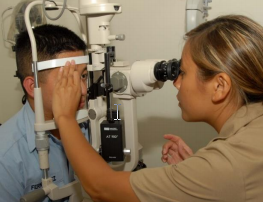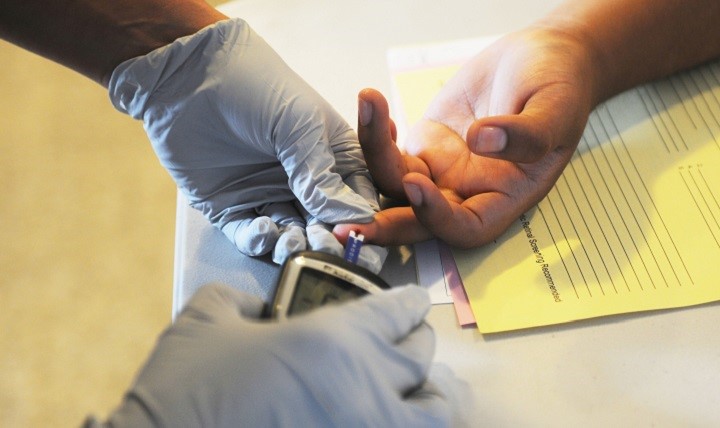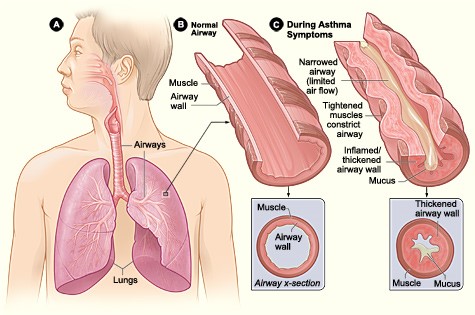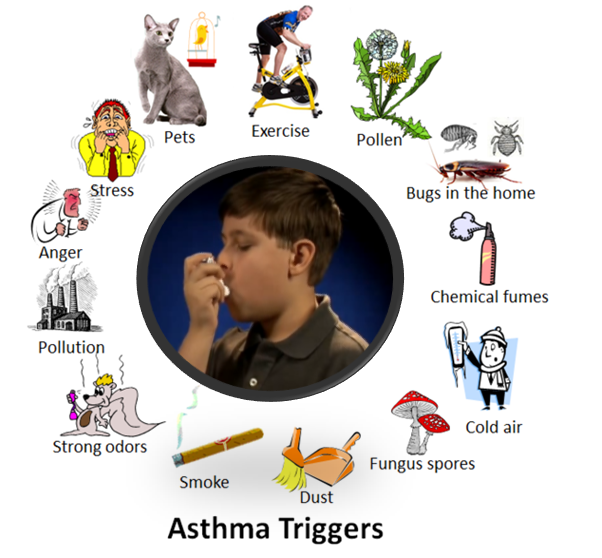10.5: Physical Health
- Last updated
- Save as PDF
- Page ID
- 105532
Vision and Hearing
The most common vision problem in middle childhood is being nearsighted, otherwise known as myopia. 25% of children will be diagnosed by the end of middle childhood. Being nearsighted can be corrected by wearing glasses with corrective lenses.

Children may have many ear infections in early childhood, but it’s not as common within the 6- 12 year age range. Numerous ear infections during middle childhood may lead to headaches and migraines, which may result in hearing loss.32
Dental Health
Children in middle childhood will start or continue to lose teeth. They experience the loss of deciduous, or “baby,” teeth and the arrival of permanent teeth, which typically begins at age six or seven. It is important for children to continue seeing a dentist twice a year to be sure that these teeth are healthy.
The foods and nutrients that children consume are also important for dental health. Offer healthy foods and snacks to children and when children do eat sugary or sticky foods, they should brush their teeth afterward.

Children should floss daily and brush their teeth at least twice daily: in the morning, at bedtime, and preferably after meals. Younger children need help brushing their teeth properly. Try brushing their teeth first and letting them finish. You might try using a timer or a favorite song so that your child learns to brush for 2 minutes. Parents or caregivers are encouraged to supervise brushing until your child is 7 or 8 years old to avoid tooth decay.
The best defense against tooth decay is flossing, brushing and adding fluoride; a mineral found in most tap water. If your water doesn’t have fluoride, ask a dentist about fluoride drops, gel or varnish. Also ask your child’s dentist about sealants—a simple, pain-free way to prevent tooth decay. These thin plastic coatings are painted on the chewing surfaces of permanent back teeth. They quickly harden to form a protective shield against germs and food. If a small cavity is accidentally covered by a sealant, the decay won’t spread because germs trapped inside are sealed off from their food supply.
Children’s dental health needs continuous monitoring as children loose teeth and new teeth come in. Many children have some malocclusion (when the way upper teeth aren’t correctly positioned slightly over the lower teeth, including under- and overbites) or malposition of their teeth, which can affect their ability to chew food, floss, and brush properly. Dentists may recommend that it’s time to see an orthodontist to maintain proper dental health. Dental health is exceedingly important as children grow more independent by making food choices and as they start to take over flossing and brushing. Parents can ease this transition by promoting healthy eating and proper dental hygiene.34
Diabetes in Childhood
Until recently diabetes in children and adolescents was thought of almost exclusively as type 1, but that thinking has evolved. Type 1 diabetes is the most common form of diabetes in children and is the result of a lack or production of insulin due to an overactive immune system. Type 2 diabetes is the most common form of diabetes in the U.S. It used to be referred to as adult-onset diabetes as it was not common during childhood. But with increasing rates of overweight and obesity in children and adolescents, more diagnoses are happening before adulthood. It is also important to note that Type 2 disproportionately affects minority youth. 35

Asthma
Childhood asthma that is unmanaged may make it difficult for children to develop to their fullest potential. Asthma is a chronic lung disease that inflames and narrows the airways. Asthma causes recurring periods of wheezing (a whistling sound when you breathe), chest tightness, shortness of breath, and coughing. The coughing often occurs at night or early in the morning. Asthma affects people of all ages, but it most often starts during childhood. In the United States, more than 25 million people are known to have asthma. About 7 million of these people are children.
To understand asthma, it helps to know how the airways work. The airways are tubes that carry air into and out of your lungs. People who have asthma have inflamed airways. The inflammation makes the airways swollen and very sensitive. The airways tend to react strongly to certain inhaled substances. When the airways react, the muscles around them tighten. This narrows the airways, causing less air to flow into the lungs. The swelling also can worsen, making the airways even narrower. Cells in the airways might make more mucus than usual. Mucus is a sticky, thick liquid that can further narrow the airways. This chain reaction can result in asthma symptoms. Symptoms can happen each time the airways are inflamed.

Sometimes asthma symptoms are mild and go away on their own or after minimal treatment with asthma medicine. Other times, symptoms continue to get worse. When symptoms get more intense and/or more symptoms occur, you're having an asthma attack. Asthma attacks also are called flare-ups or exacerbations (eg-zas-er-BA-shuns).

Treating symptoms when you first notice them is important. This will help prevent the symptoms from worsening and causing a severe asthma attack. Severe asthma attacks may require emergency care, and they can be fatal. Asthma has no cure. Even when you feel fine, you still have the disease and it can flare up at any time.
However, with today's knowledge and treatments, most people who have asthma are able to manage the disease. They have few, if any, symptoms. They can live normal, active lives and sleep through the night without interruption from asthma. If you have asthma, you can take an active role in managing the disease. For successful, thorough, and ongoing treatment, build strong partnerships with your doctor and other health care providers.39
Childhood Stress
Take a moment to think about how you deal with and how stress affects you. Now think about what the impact of stress may have on a child and their development?
Of course children experience stress and different types of stressors differently. Not all stress is bad. Normal, everyday stress can provide an opportunity for young children to build coping skills and poses little risk to development. Even more long-lasting stressful events such as changing schools or losing a loved one can be managed fairly well. But children who experience toxic stress or who live in extremely stressful situations of abuse over long periods of time can suffer long-lasting effects. The structures in the midbrain or limbic system such as the hippocampus and amygdala can be vulnerable to prolonged stress during early childhood (Middlebrooks and Audage, 2008). High levels of the stress hormone cortisol can reduce the size of the hippocampus and effect the child’s memory abilities. Stress hormones can also reduce immunity to disease. If the brain is exposed to long periods of severe stress it can develop a low threshold making the child hypersensitive to stress in the future. Whatever the effects of stress, it can be minimized if a child learns to deal with stressors and develop coping strategies with the support of caring adults. It’s easy to know when your child has a fever or other physical symptoms. However, a child’s mental health problems may be harder to identify. In the next section, we’ll look at childhood Mental Health Disorders.40

Contributors and Attributions
32. Rathus, Spencer A. (2011). Childhood & adolescence voyages in development. Belmont, CA: Wadsworth Cengage Learning.
34. Chew on This - Healthy Teeth for Baby and Beyond by the National Institutes of Health is in the public domain (modified by Dawn Rymond)
Childhood by University of Hawai’i at Mānoa Food Science and Human Nutrition Program is licensed under CC BY-NC-SA 4.0 (modified by Dawn Rymond)
35. Diabetes by the National Institute of Diabetes and Digestive and Kidney Diseases is in the public domain
Preventing Type 2 Diabetes - Steps Toward a Healthier Life by the National Institutes of Health is in the public domain
39. Asthma by the National Heart, Lung, and Blood Institute is in the public domain
40. Lifespan Development - Module 5: Early Childhood by Lumen Learning references Psyc 200 Lifespan Psychology by Laura Overstreet, licensed under CC BY 4.0 (modified by Dawn Rymond)


